 |
 |
 |
| |
Ultra-Deep Sequencing of the NS3 and NS5B Regions Detects Pre-Existing Resistant Variants to Direct Acting Antivirals (DAA) in HCV Genotype 1 Treatment-Na´ve Infected Patients
|
| |
| |
Reported by Jules Levin
AASLD Nov 2 2010 Boston
Severine Margeridon-Thermet1, Sophie Le Pogam2, Tommy F. Liu1, Bozena Hanczaruk3, Todd E. Arnold3, Birgitte Simen3, Nancy Shulman4, Robert W. Shafer1, Isabel Najera2
1 Infectious Diseases and Geographic Medicine, Stanford university Medical School, Stanford, CA, USA 2 Virology Discovery- Pharma Research Early Development, Hoffmann La Roche , Nutley, NJ, USA 3 454 Life Sciences, a Roche Company, Branford, CT, USA 4 pRED, Genentech, South San Francisco, CA, USA
S. MARGERIDON-THERMET, Ph. D.
Stanford University
Division of Infectious Diseases
300 Pasteur Drive, S-009
Stanford, CA 94305
e-mail: severine@stanford.edu
-- A total of 9 minority variants resistant to PI were identified: 5 were found by clonal sequencing, and 4 by UDPS .
-- UDPS and clonal sequencing identified minority variants resistant to PIs in 6 of the 29 NS3 isolates at prevalence ranging from 0.5% to 2.4% (figure 4).
-- A total of 16 minority variants resistant to NNI were identified: 5 were found by clonal sequencing, 10 by UDPS and 1 by both techniques.
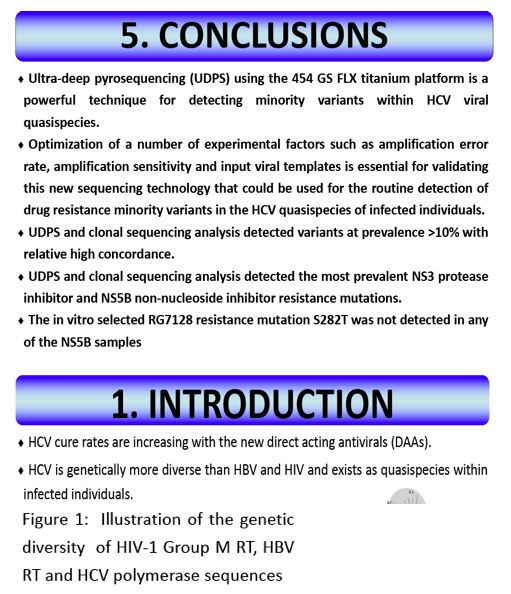
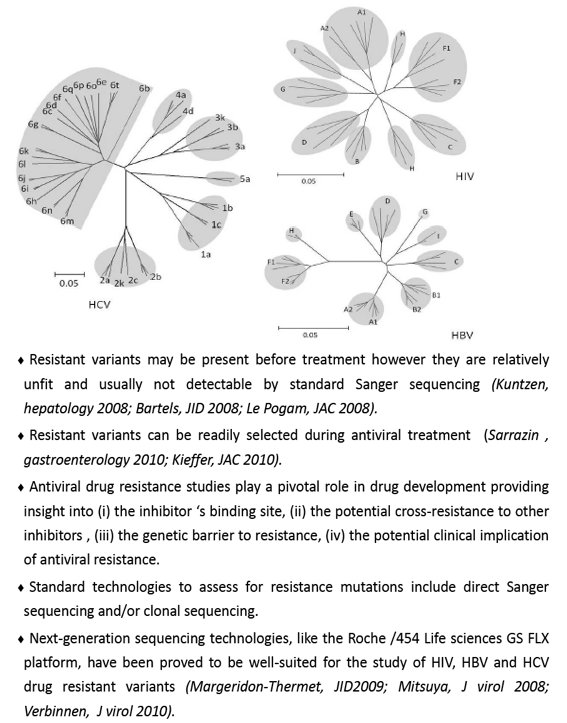
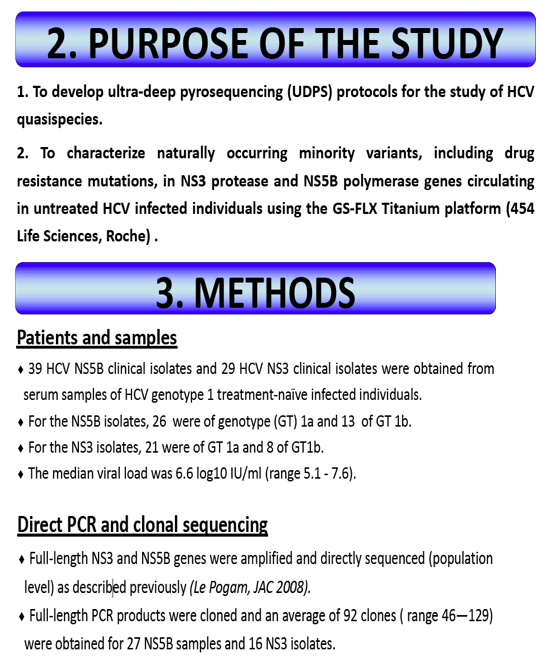
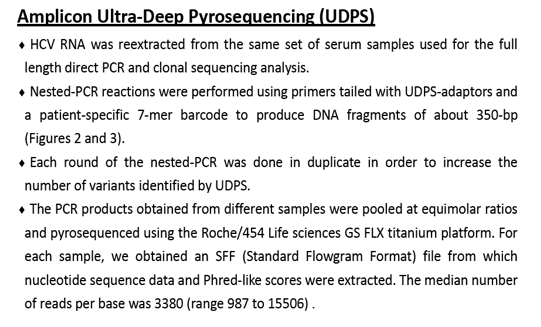
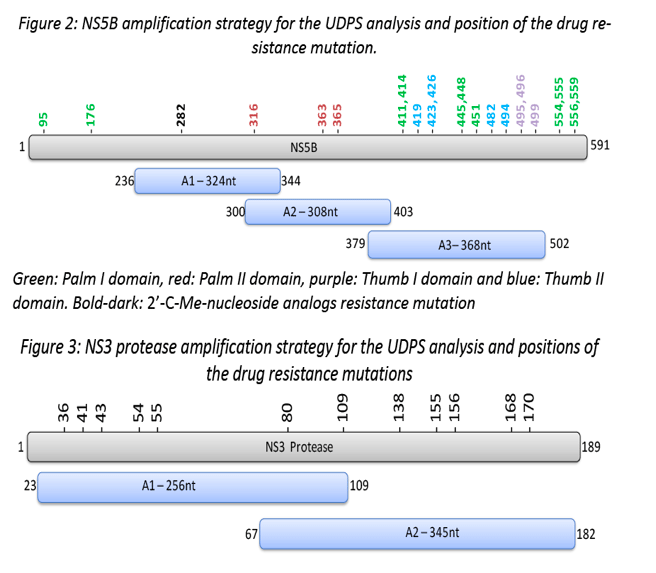
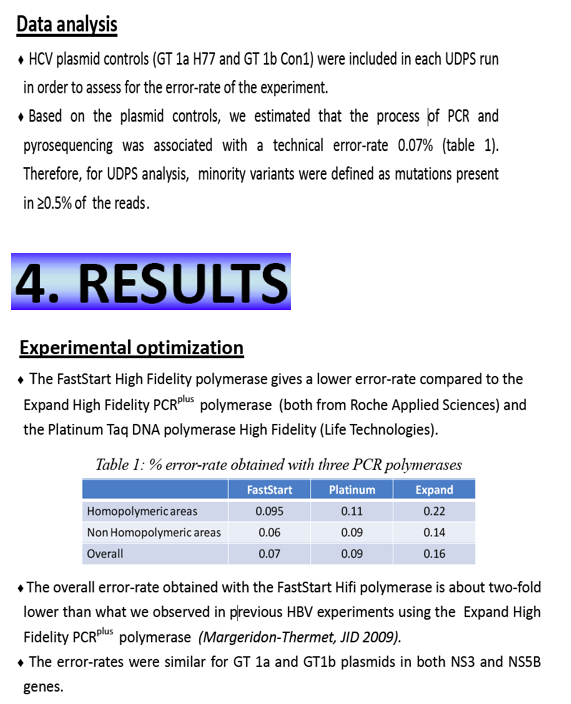
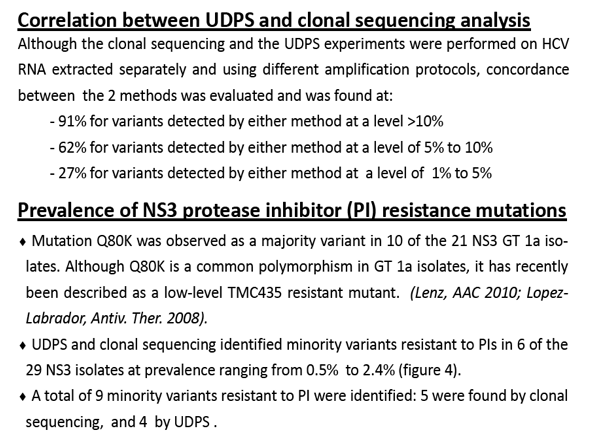
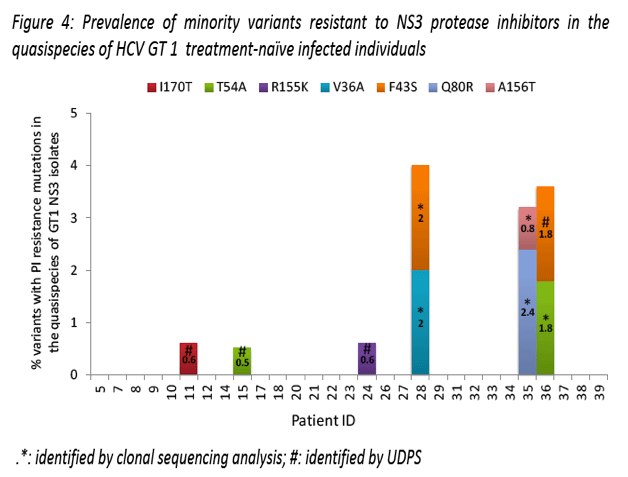
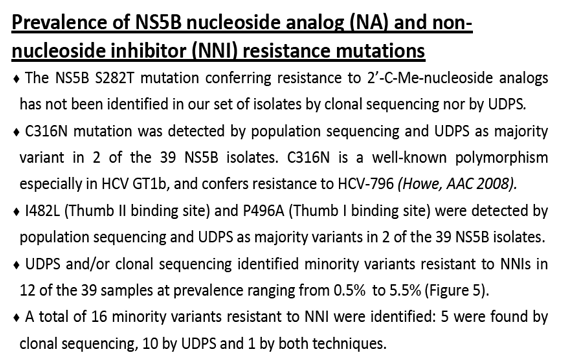
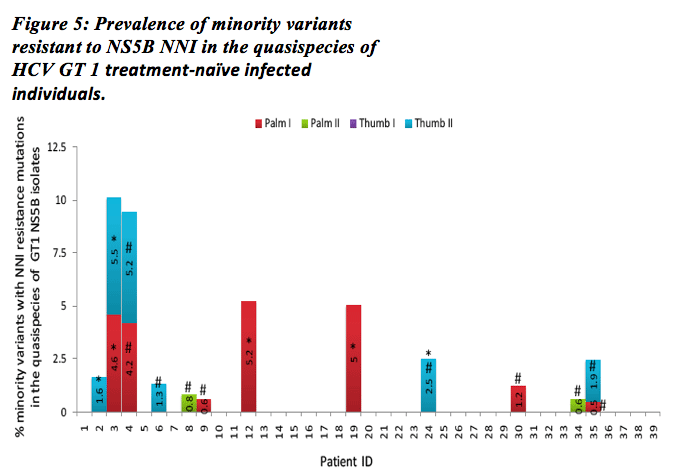
Red bars, palm I-related amino acid residues; green bars, palm II-related amino acid residues; purple bars, thumb I-related amino acid residues; blue bars, thumb II-related residues. *: found by clonal sequencing analysis; #: found by UDPS.
|
| |
|
 |
 |
|
|